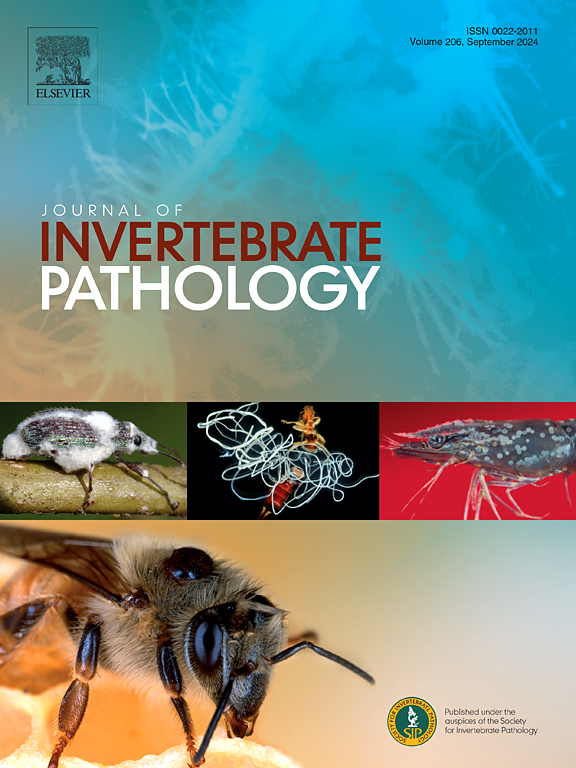Connecting academia and industry: Advancing the use of entomopathogenic nematodes to tackle emerging challenges and opportunities in modern agriculture
IF 2.4
3区 生物学
Q1 ZOOLOGY
引用次数: 0
Abstract
The collaboration among academia, industry, and government is crucial for scientific progress and innovation. Academia generates fundamental knowledge, which industry translates into sound applications, considering government policies. This partnership is vital to feed progress and constant development and address global challenges like climate change and food security. Sustainable crop protection is a topical theme, with efforts to reduce pesticide reliance and promote alternatives to chemical pest management, and it continues to grow and be accepted worldwide. In this respect, biopesticides such as entomopathogenic nematodes (EPNs) offer a promising solution for pest and disease management as an eco-friendly alternative. However, EPN continue to face adoption barriers due to regulatory, commercialization and basic and applied knowledge gaps. Thus, stronger collaborations are needed to unlock their full potential, as highlighted in the 2024 congress organized in La Rioja (Spain) to commemorate the 100 years since the discovery of the first EPN. This review examines the gap between academia and industry, suggesting strategies to bridge it, thereby promoting the advancement of EPN in 21st-century agriculture. Despite decades of research demonstrating their efficacy, EPN commercialization remains limited by production, formulation, and application challenges. Universities and government research agencies have driven fundamental innovation through the discovery of new EPN-bacteria partnerships in new regions of the world, which are helping us understand their distribution and habitant adaptations which are required for their registration and in establishing global regulations. Research conducted both in academia and the private sector (both big and small start-up companies) has and continues to play a key role in the characterization of EPN and in assessing their performance for their subsequent formulation, product optimization, and commercialization. These are fundamental steps to reach the ultimate goal, which is to provide growers with reliable products that are cost-effective and sustainable. In this review, we summarize key findings that have led to the commercialization and application of EPN, spanning from the characterization of EPN and their symbiotic bacteria to production, formulation, and the requirements for their registration. We also highlight critical knowledge gaps and opportunities for collaboration between academia, government agencies, and industry. Strengthening these partnerships will drive EPN adoption in agriculture, establishing them as a desirable biocontrol solution.

连接学术界和产业界:推进昆虫病原线虫的使用,以应对现代农业中出现的新挑战和机遇
学术界、产业界和政府之间的合作对科学进步和创新至关重要。学术界产生基础知识,工业界在考虑政府政策的情况下将其转化为合理的应用。这种伙伴关系对于推动进步和持续发展以及应对气候变化和粮食安全等全球挑战至关重要。可持续作物保护是一个热门话题,人们努力减少对农药的依赖,推广化学有害生物管理的替代品,这一主题不断增长,并被全世界所接受。在这方面,昆虫病原线虫(EPNs)等生物农药作为一种生态友好的替代品,为病虫害管理提供了一个有希望的解决方案。然而,EPN继续面临由于监管、商业化以及基础和应用知识差距而导致的采用障碍。因此,需要加强合作以释放其全部潜力,正如2024年在拉里奥哈(西班牙)举办的纪念首个EPN发现100周年大会所强调的那样。本综述探讨了学术界与产业界之间的差距,并提出了弥合这一差距的策略,从而促进EPN在21世纪农业中的发展。尽管几十年的研究证明了EPN的有效性,但EPN的商业化仍然受到生产、配方和应用挑战的限制。大学和政府研究机构通过在世界新地区发现新的epn细菌伙伴关系,推动了根本性的创新,这有助于我们了解它们的分布和栖息地适应,这是它们注册和建立全球法规所必需的。在学术界和私营部门(大型和小型初创公司)进行的研究已经并将继续在确定紧急方案网络的特征和评估其后续配方、产品优化和商业化的性能方面发挥关键作用。这些是实现最终目标的基本步骤,最终目标是为种植者提供具有成本效益和可持续发展的可靠产品。在这篇综述中,我们总结了导致EPN商业化和应用的主要发现,从EPN及其共生细菌的表征到生产、配方和注册要求。我们还强调了学术界、政府机构和工业界之间的关键知识差距和合作机会。加强这些伙伴关系将推动EPN在农业中的应用,使其成为一种理想的生物防治解决方案。
本文章由计算机程序翻译,如有差异,请以英文原文为准。
求助全文
约1分钟内获得全文
求助全文
来源期刊
CiteScore
6.10
自引率
5.90%
发文量
94
审稿时长
1 months
期刊介绍:
The Journal of Invertebrate Pathology presents original research articles and notes on the induction and pathogenesis of diseases of invertebrates, including the suppression of diseases in beneficial species, and the use of diseases in controlling undesirable species. In addition, the journal publishes the results of physiological, morphological, genetic, immunological and ecological studies as related to the etiologic agents of diseases of invertebrates.
The Journal of Invertebrate Pathology is the adopted journal of the Society for Invertebrate Pathology, and is available to SIP members at a special reduced price.

 求助内容:
求助内容: 应助结果提醒方式:
应助结果提醒方式:


